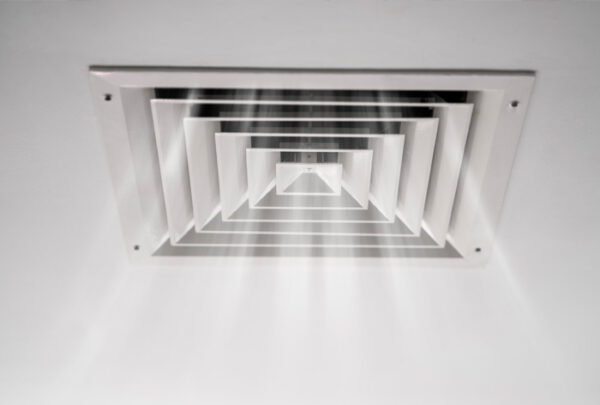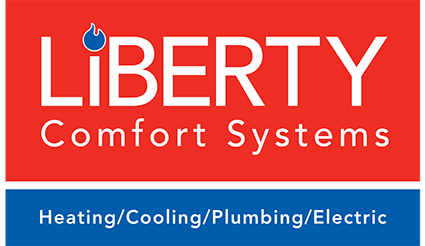
The heat exchanger in a gas furnace is what transfers the heat that the unit produces to the air that is drawn through it. A heat exchanger is a series of metal tubes that run between the combustion chamber and the exhaust flue. When the unit burns gas, it produces hot combustion fumes that travel through the heat exchanger. These fumes cause the metal to become extremely hot, and this heat then flows out into the cooler air that is forced over the exchanger.
A clogged, cracked or broken heat exchanger is the most serious of all furnace problems as it will allow carbon monoxide to escape and be circulated throughout your ductwork into the rest of the home. The most common reason that a heat exchanger will crack is due to the furnace overheating due to a clogged air filter or some other issue. If your furnace is too large for your home, it will also frequently overheat as it produces heat more quickly than the system can handle.
Heat exchangers can also break or crack simply due to normal wear and tear. This is because the metal constantly expands every time the furnace runs and then contracts as it cools down once the furnace shuts off. The fact that a broken heat exchanger can allow potentially deadly carbon monoxide to leak out means that it is the single biggest furnace issue you need to watch out for, and here are some of the signs to look for that indicate your heat exchanger is bad.
1. Carbon Monoxide Detector Goes Off
Carbon monoxide poisoning kills more than 400 people in the US every year and sends more than 50,000 people to the emergency room, and the majority of these cases are related to gas furnaces and other gas-burning appliances. The best way to prevent carbon monoxide is to install carbon monoxide detectors in various parts of your home. The general rule is that you should always have one carbon monoxide detector located approximately 15 to 20 feet away from your furnace. You should also have additional detectors within 15 feet of the door to every bedroom and at least one on every floor of the home.
Having a carbon monoxide detector go off is a sure sign that there is a problem with your furnace or some other gas-burning appliance. If the detector near your furnace goes off, you can be almost certain that the furnace is the culprit.
There are two main issues that can cause a furnace to leak carbon monoxide—a broken heat exchanger or some problem with the exhaust flue that prevents the combustion fumes from being vented outside. In either case, the very first thing you should do is immediately leave the building as soon as the carbon monoxide detector goes off. Once you and your family are safely outside, you will then need to contact an HVAC company to have your heating system inspected to determine the specific cause of the issue.
2. Chemical Smells
One of the reasons that carbon monoxide is so deadly is that it is completely colorless and odorless, which means that carbon monoxide detectors are the only way to know when it is present. However, carbon monoxide isn’t the only byproduct produced when your furnace burns natural gas or propane, and some of these other combustion fumes do have a smell. Specifically, some of the fumes have a strong chemical smell that is similar to formaldehyde. If you ever notice a chemical smell or any other unusual odors coming from the furnace itself or flowing out of your vents, you should immediately shut your heating system off until you can have it inspected.
3. Rattling Sounds
Heat exchangers typically crack at the joint where the pipes connect to the combustion chamber. This can cause part of the heat exchanger to come loose and result in it making an audible rattling noise whenever your furnace is running. A cracked heat exchanger can also sometimes produce loud banging or popping sounds. While all of these sounds could potentially be caused by some other furnace issue, they are still something you should get checked out immediately just to be safe.
4. Soot Buildup on the Heat Exchanger or Gas Burners
A cracked or malfunctioning heat exchanger will often develop a buildup of white soot on the metal, and you may also notice that parts of the metal are discolored. Both of these issues generally occur because some of the combustion fumes are escaping out of the heat exchanger.
Another possible sign is if you notice soot buildup on the gas burners. This issue indicates that the burners aren’t fully combusting the gas for some reason. This most commonly happens because the burners are dirty and beginning to clog up. However, it can also occur when the combustion fumes aren’t drawn out of the combustion chamber properly due to some problem with either the heat exchanger or the exhaust flue. In either case, these fumes will partially starve the flames of oxygen and result in the gas not fully combusting.
5. Burners Produce Yellow or Orange Flames
Most furnaces allow you to easily see the burners by opening an access panel or looking through a small opening. When a furnace is working correctly, you should see strong, steady, bright blue flames coming from all of the burners. Yellow or orange colored flames are a sign that the gas isn’t fully combusting. Again, this is usually because the burners are dirty, the exhaust flue is clogged or due to a cracked or clogged heat exchanger.
6. Lack of Heat
Most heat exchanger issues will prevent the metal from heating up as it should, and this typically results in the furnace producing little to no heat. A lack of sufficient heat or no heat at all can result from numerous issues. In many cases, the culprit is something as seemingly minor as a dirty air filter. Nonetheless, this is still an issue you should have checked out as soon as possible since it could be a sign of a broken heat exchanger or some other more serious problem.
Can a Broken Heat Exchanger Be Replaced?
It is generally always possible to replace a cracked or broken heat exchanger. Unfortunately, the process is both difficult and time-consuming, which means that it is also quite expensive. In most cases, replacing a heat exchanger will end up costing almost the same as installing a new furnace. If your furnace is fairly new and still under warranty, then replacing a broken heat exchanger definitely makes sense. If your furnace is more than 10 years old, we would always recommend replacing the entire unit since it likely also has a variety of other potential problems.
If you suspect that your heat exchanger is broken or you’re having any other furnace issues, Liberty Comfort Systems is here to help. We repair and maintain all types and brands of furnaces, and we also specialize in furnace replacement and installation. Our team also installs and services air conditioners and radiant heating systems, and we offer a full range of plumbing and electrical services as well. Give us a call today to schedule a furnace inspection or if you need any other home service in the Anoka area.

